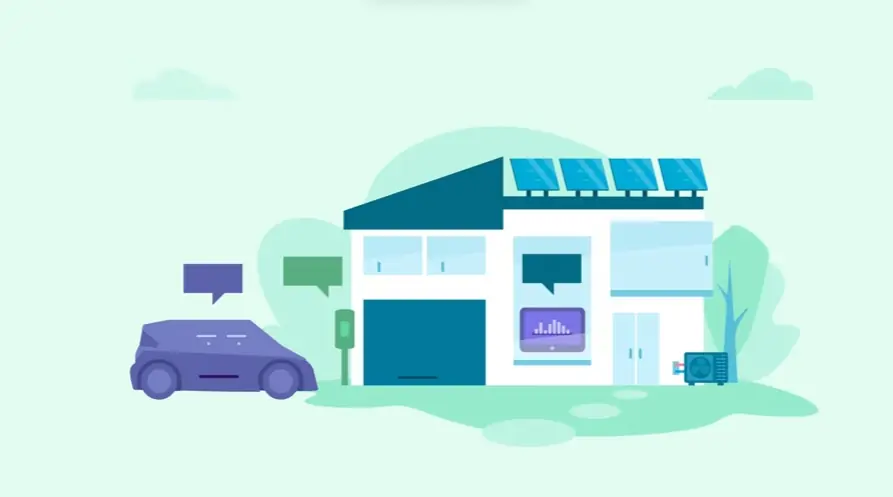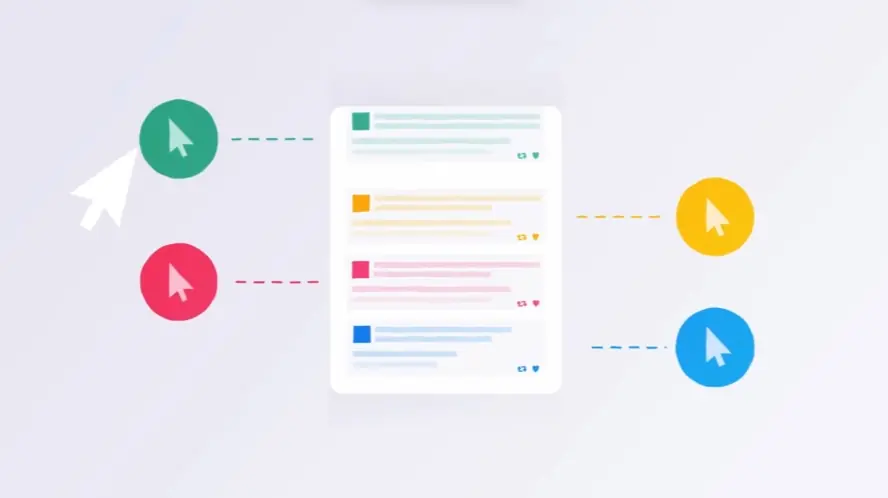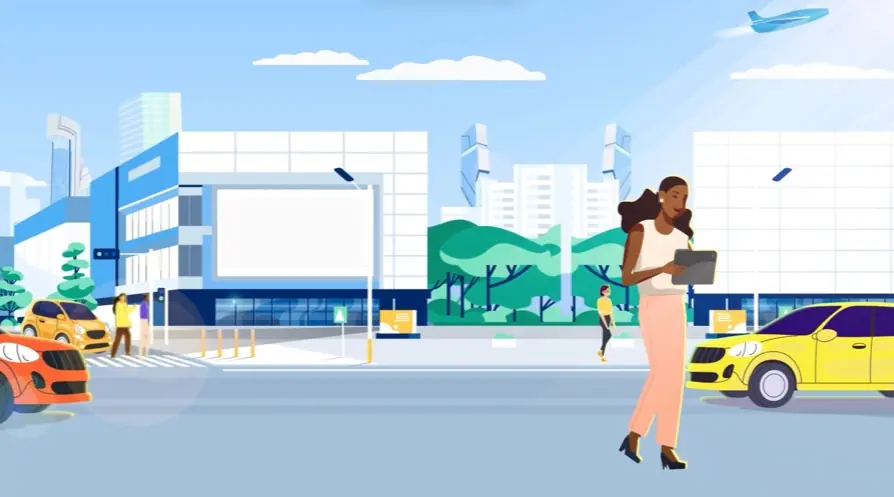Measuring Software Teaser Video Effectiveness
Understanding the impact of your Software Product Teaser Video begins with rigorous measurement. Moving beyond mere creation, teams must analyze performance data to gauge success against specific marketing objectives. Whether the goal was enhancing brand visibility or driving immediate action, metrics provide clarity on what resonated with viewers and what fell short. This analytical step transforms creative effort into actionable insight, guiding future video strategies for better results.
Measuring effectiveness involves tracking various data points throughout the marketing funnel. Initial views, impressions, and reach indicate the video's ability to capture attention and expand brand awareness. Diving deeper into engagement metrics reveals viewer interest levels. These include watch time, audience retention, and the video's play rate, showing how compelling the content was once discovered.
Analyzing actions taken after viewing offers crucial insights into the video's persuasive power. Tracking clicks on calls to action, form submissions, or email sign-ups directly correlates video performance with lead generation efforts. Key performance indicators like click-through rate CTR and overall conversion rate paint a clear picture of the video's contribution to driving desired user actions and supporting sales teams.
Ultimately, assessing video content ROI provides a holistic view of investment efficiency. This involves comparing the costs of producing a video against the returns on video content, which can include direct sales attributed to the video or indirect benefits like reduced support queries or increased website traffic. Utilizing video tracking software and marketing attribution software helps connect these dots, offering quantifiable results that demonstrate the software product teaser video's true value and potential for greater success.
Why Advids for Software Product Teaser Video?
At Advids, we create high-impact Software Product Teaser Videos that drive results. Our blend of creative storytelling, advanced technology, and proven experience ensures your vision translates into a compelling and effective teaser. With over 3400 successful projects under our belt, we understand what makes a Software Product Teaser Video truly captivating.
Why Choose Advids?
Experience & Trust: 12+ years of experience and over 3400 satisfied clients, including industry leaders like Razorpay, Ola, Mercedes, the United Nations, Continental, and Mercer.
Proven Results: Over 109 five-star Google reviews speak to our commitment to client satisfaction and delivering exceptional results.
Software Product Teaser Video Expertise: We've crafted between 185 and 470 successful Software Product Teaser Videos, showcasing our deep understanding of this specific medium.
Our Creative Process:
Collaboration: We work closely with you from concept to completion, ensuring your vision is at the heart of every decision.
Customized Solutions: We tailor each Software Product Teaser Video to your specific needs , brand, and target audience, whether it's showcasing new features or building pre-launch excitement.
Strategic Storytelling: Our skilled animators and storytellers craft narratives that resonate with your audience and drive engagement.
Cutting-Edge Technology: We utilize the latest animation software and techniques to create visually stunning and impactful teasers.
Open Communication: We prioritize clear and consistent communication throughout the process, ensuring your feedback is heard and implemented.
Ready to unlock the potential of Software Product Teaser Video for your business with the latest video design trends of 2024? Let Advids be your trusted partner in transforming your ideas into engaging and effective animated experiences.
Checkout some of the projects and work our team at Advids has been producing:
What is a Software Product Teaser Video?
A Software Product Teaser Video is a short, engaging video designed to introduce your software product to potential customers. It's a powerful tool for generating excitement, capturing attention, and ultimately driving conversions. These videos typically provide a concise overview of the product's value proposition, highlighting its key features and benefits. They can range in format from animation and live-action to screen capture demonstrations, depending on the product and target audience. teaser videos are usually short, often under 60 seconds, and focus on creating excitement and anticipation for the full product launch or a more detailed product demo. They are a valuable tool for building brand awareness and generating buzz around your software.
Uses of Teaser Videos
Teaser videos are used in various marketing campaigns to achieve specific goals. They can be used to:
- Generate leads
- Increase brand awareness
- Drive conversions
- Educate potential customers about the product
- Support sales teams by providing them with engaging tools to educate prospects and drive conversions
What do top Software Product Teaser Videos have in common?
Mastering software teaser videos requires focusing on the viewer's needs and showcasing the software's transformative power.
Ideal Customer Focus - Emphasize user personas and their specific needs, showcasing relatable scenarios.
- Value Proposition - Quantify the software's benefits with concrete examples and data points.
- Problem/Solution Fit - Illustrate the problem vividly before revealing the elegant solution.
- Key Feature Highlights - Prioritize features that deliver the most significant value to users.
- Intuitive User Experience - Use screen recordings to show effortless navigation and interaction.
- high-quality visuals - Employ professional-grade graphics and animation to enhance engagement.
- Compelling Narrative - Craft a concise and emotionally resonant story that resonates with viewers.
- Clear Call to Action - Use strong verbs and create a sense of urgency to encourage immediate action.
- Quantifiable Results - Present data visually, using charts and graphs to highlight key achievements.
- User Success Stories - Feature authentic testimonials from satisfied customers, emphasizing their positive experiences.
What makes Software Product Teaser Video effective?
Software product teaser videos are effective when they distill intricate software functionalities, making them easily digestible for the viewer. Instead of merely grabbing attention, these videos should provoke immediate curiosity, enticing viewers to learn more. The focus should shift from showcasing features to demonstrating tangible user benefits, highlighting how the software directly improves the users experience. Rather than just motivating viewers to learn more, the goal is to drive them towards product exploration, encouraging active engagement.
These videos should concisely communicate the softwares core differentiator, clearly establishing what sets it apart from competitors. They must include an unambiguous next-step prompt, guiding viewers towards a specific action, such as visiting a website or requesting a demo. The aim is to create memorable brand recall, ensuring the software remains top-of-mind for potential customers. This is achieved through impactful visual storytelling, using visuals to convey a narrative rather than just displaying features.
A cohesive visual identity is essential, maintaining a consistent look and feel that reinforces the brand. Finally, the creation of these videos requires strategic pre-production and precise delivery, ensuring every element is carefully planned and executed. This approach ensures that the teaser video not only captures attention but also effectively communicates the value and potential of the software.
How long should your Software Product Teaser Video be?
Optimize software teaser video length for maximum impact by aligning video type, use case, and funnel stage.
Pre-production Considerations for Determining Video Length:
- What problem does the video solve?
- Who is the ideal viewer?
- Which features are most crucial?
- How intuitive is the software?
- Where will the video be shown?
- What is the video's core message?
- What style best suits the brand?
Software product teaser video length guide
| Software Product Teaser Types | Video Length | Use Case | Funnel |
|---|
| Animated Explainer | 45-60 seconds | Clearly explains complex software features using engaging visuals and concise narration, ideal for SaaS products It simplifies complex concepts quickly and effectively, boosting understanding | Awareness/Consideration |
| Product Demo | 60-90 seconds | Showcases key features and functionalities through a step-by-step demonstration, highlighting user benefits and ease of use Focuses on practical application and value proposition | Consideration/Conversion |
| Problem/Solution | 30-45 seconds | Presents a relatable problem and demonstrates how the software solves it, emphasizing the value proposition and user pain points Uses a narrative structure to engage viewers | Awareness/Consideration |
| Cinematic Trailer | 15-30 seconds | Creates excitement and intrigue with high-quality visuals and a compelling narrative, generating interest and anticipation Emphasizes visual storytelling and brand identity | Awareness |
| Fast-Paced Montage | 15-30 seconds | Showcases the software's key features and benefits through a dynamic montage of quick shots and transitions, creating a sense of energy and excitement Uses a fast-paced style to capture attention | Awareness |
How to create Software Product Teaser Videos?
Crafting compelling software product teaser videos requires a strategic approach that prioritizes understanding your target audience and showcasing the software's unique value proposition . A well-executed video can significantly impact your marketing efforts, driving engagement and conversions.
* Target Audience - Deeply understanding your audience ensures resonant messaging and visuals.- Key Benefits - Focus on solving user problems, not just listing features. Emphasize the "why".
- Compelling Narrative - A strong narrative creates emotional connection and memorability.
- Storyboard Creation - A detailed storyboard ensures a cohesive and professional final product.
- Visual Style - A consistent visual style reinforces brand identity and creates a professional look.
- Scriptwriting - Concise, benefit-driven copy maximizes impact and keeps viewers engaged.
- Video Filming/Animation - High-quality visuals are crucial for showcasing the software's UI effectively.
- Video Editing - Smooth transitions and pacing maintain viewer interest and enhance the overall experience.
- Call to Action - A clear, compelling CTA drives conversions and encourages user engagement.
- Platform Optimization - Reaching a wider audience requires optimization for various platforms and devices.
Targeting Your Ideal Audience with Your Software Video
Targeting your ideal audience is crucial for software video success. Let's explore how to create videos that resonate and convert. We'll build upon what we've already discussed, focusing on practical strategies.
Remember, understanding your audience is key. This means knowing their demographics, pain points, and what they value. Research competitors and industry trends to gain a competitive edge.
Now, let's dive into specific tactics:
- Craft relatable narratives. Connect with your audience emotionally by showcasing realistic scenarios and addressing their specific needs. Think about the "best software video examples" you've seen – what made them effective?
- Showcase solutions, not just features. "Software feature video examples" are helpful, but focus on the "why." How does your software solve problems and improve lives? Demonstrate value clearly.
- optimize for your platform . Consider where your video will be shown and tailor its length and style accordingly. Shorter, impactful videos often perform well, especially on social media .
- Use compelling visuals. High-quality graphics and animation capture attention and enhance understanding. Explore "SaaS product video examples" for inspiration.
By implementing these strategies, you can create software videos that truly connect with your target audience. Remember, " software demo video examples " can be highly effective for showcasing functionality, but always prioritize the user's needs and demonstrate the value your software brings.
Choosing the Right Animation Style for Your Software
Having explored various software teaser video examples, let's now focus on choosing the right animation style. This crucial decision significantly impacts how your audience perceives your software and the overall effectiveness of your video. Remember, the goal is to create a video that not only informs but also captivates and resonates with your viewers. Think about successful creative software video examples you've seen – what made their animation style so compelling?
We need to consider several factors when selecting an animation style. Is your target audience tech-savvy or more general? Is your software complex, requiring detailed explanation, or is it user-friendly and intuitive? For complex software, technology explainer video examples can offer inspiration. Your brand identity also plays a crucial role. The animation style should align seamlessly with your brand's overall aesthetic and messaging. Finally, consider your budget and timeline. High-end 3D animation can be costly and time-consuming, while 2D animation or motion graphics offer more budget-friendly alternatives.
- Match animation complexity to software complexity. Simple software might benefit from clean, minimalist animation, while more complex software might require more detailed visuals.
- Reflect your brand's personality. A playful brand might use vibrant, cartoonish animation, while a professional brand might opt for a more sophisticated style. Look at explainer video software examples for inspiration.
- Consider the video's purpose. A product demo might use screen recordings and motion graphics, while a brand awareness video might employ more abstract animation.
- software launch video examples often use dynamic animation to generate excitement and build anticipation.
By carefully considering these factors, we can choose an animation style that effectively communicates our message, resonates with our target audience, and ultimately drives the desired results.
Using Data Visualization Effectively in Software Videos
Let's talk about data visualization. It's more than just charts and graphs; it's about transforming raw data into compelling visuals that resonate with viewers. In our software videos, data visualization isn't just about showing numbers; it's about telling a story, making complex information digestible, and ultimately, driving action. Think about those successful software product video examples you've seen – chances are, they used data visualization effectively.
Data visualization can elevate even short software video examples. It's about choosing the right visuals, simplifying complex data, and highlighting key insights. It's about making data work for you, not against you.
- Choose wisely: Select the right chart type (line, bar, pie) for your data and message. A well-chosen chart can make all the difference in clarity and impact.
- Keep it simple: Avoid overwhelming viewers with too much information. Focus on the essential data points that support your narrative. Remember, even in product animation video examples, simplicity is key.
- Tell a story: Connect data points to create a compelling narrative. Data should enhance your story, not distract from it.
- Make it accessible: Design charts with accessibility in mind, ensuring all viewers can understand the information presented. This is especially important for enterprise software video examples, where complex data is often presented.
By following these tips, we can transform data from dry facts into engaging visuals that resonate with our audience. Data visualization, when done right, can be a powerful tool for communicating the value of our software and driving conversions.
Showcasing Key Features in a Concise and Engaging Way
Building on our foundation, let's explore how we can showcase key features concisely and engagingly. Remember, we want to grab viewers' attention and highlight our software's value quickly. Think of those top software video examples you've seen – they hook you instantly.
We can achieve this by focusing on the "why" behind each feature. Instead of simply listing functionalities, let's demonstrate how they solve real-world problems. Think about app promo video examples – they emphasize benefits, not just features. Let's adopt a similar approach.
Software animation video examples can be incredibly effective for explaining complex features visually. For instance, imagine showcasing a data analysis tool. Instead of just saying it "analyzes data," show a quick animation of data transforming into insightful charts. This visual approach makes the feature more tangible and engaging.
Here's how we can make our feature presentations shine:
- Show, don't tell: Use screen recordings to demonstrate features in action. Let viewers see the software's intuitive user experience firsthand.
- Prioritize clarity: Break down complex features into digestible chunks. Avoid jargon and technical terms.
- Focus on benefits: Highlight how each feature directly addresses user pain points and improves their workflow.
- Keep it concise: Respect viewers' time. Get to the point quickly and avoid unnecessary details.
By following these tips and drawing inspiration from product marketing video examples, we can create teaser videos that effectively communicate the value of our software and leave a lasting impression.
Using Visual Metaphors to Explain Complex Software
Let's dive into the art of using visual metaphors to explain complex software. We've seen how crucial clear communication is, and metaphors are powerful tools in our arsenal. They bridge the gap between abstract software functions and tangible viewer understanding. Think about tech product video examples you've seen – a shield representing security software instantly clicks, right? That's the power of a well-chosen metaphor.
Metaphors aren't just about pretty pictures; they're about making complex ideas accessible. Just like in compelling product demo video examples , metaphors can highlight key features by showing, not just telling. Imagine explaining a data analysis tool. Instead of saying it "processes data," show an animation of data transforming into insightful charts, like a seed growing into a plant. This visual approach makes the feature more tangible and engaging.
- Brainstorm metaphors by considering your software's core function and target user's needs . What problems does your software solve? What imagery resonates with your audience?
- Balance clarity and creativity. Metaphors should be engaging but not confusing. Test their effectiveness with your target audience to ensure they resonate.
- Seamlessly integrate metaphors into your software animation video examples for cohesive storytelling. A consistent visual language enhances understanding and memorability.
- Avoid clichés. Strive for fresh, original metaphors that stand out. Remember those engaging software video examples? They captivate because they're unique.
By carefully crafting visual metaphors, we transform complex software concepts into compelling narratives. This approach not only clarifies functionality but also creates a lasting impression, making our software more memorable and ultimately, more successful.
Author & Editor Bio
A video producer with a passion for creating compelling video narratives, Jai Ghosh brings a wealth of experience to his role. His background in Digital Journalism and over 11 years of freelance media consulting inform his approach to video production. For the past 7 years, he has been a vital part of the Advids team, honing his expertise in video content planning, creation, and strategy.
His collaborative approach ensures that he works closely with clients, from startups to enterprises, to understand their communication goals and deliver impactful video solutions. He thrives on transforming ideas into engaging videos, whether it's a product demo, an educational explainer, or a brand story.
An avid reader of modern marketing literature, he keeps his knowledge current. Among his favorite reads from 2024 are "Balls Out Marketing" by Peter Roesler, "Give to Grow" by Mo Bunnell and "For the Culture" by Marcus Collins. His results-driven approach ensures that video content resonates with audiences and helps businesses flourish.




